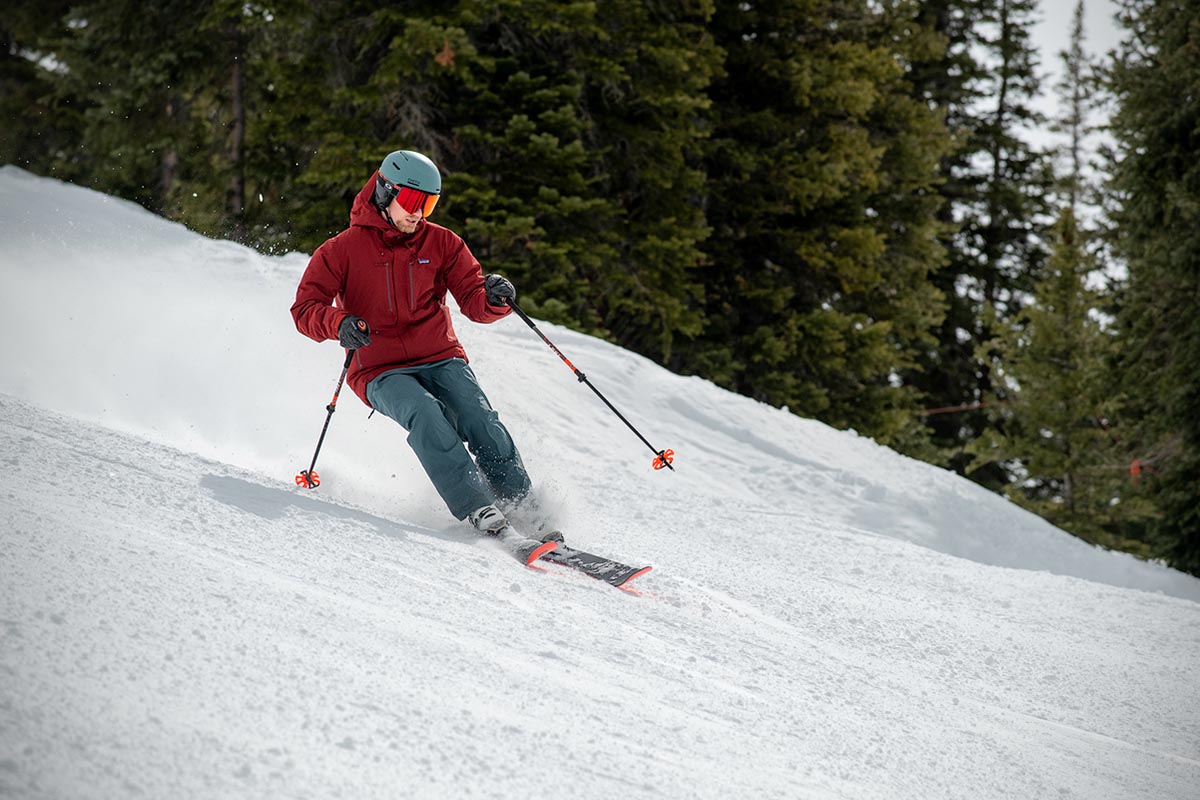
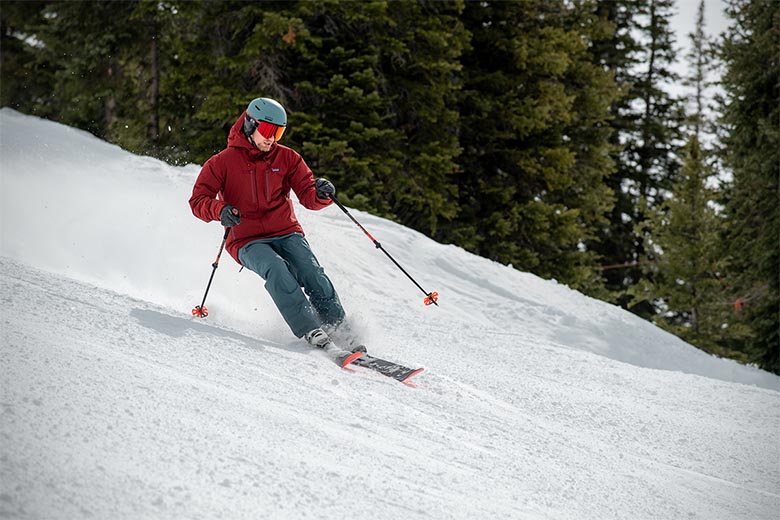
Price: $180
Construction: In-mold
Weight: 1 lb. 0.6 oz. (size medium)
Vents: 10 (2 are adjustable)
What we like: Light yet comfortable and feature-rich.
What we don’t: Vulnerable to cosmetic damage and has a somewhat narrow/small fit.
See the Smith Altus MIPS See the Women's Smith Vida MIPS
An all-new entry for winter 2020-2021, Smith’s Altus helmet takes features from the brand’s premium models and packs them into a lightweight and sleek design. Our testing was cut a bit short due to COVID-19, but we managed to take the Altus and women's Vida along for a week of skiing in Crested Butte and a few days back home in the Pacific Northwest. The verdict: the helmet’s low-profile shape gives it a smaller and narrower fit than most other Smith lids we’ve worn, but it nevertheless provides a solid combination of cushioning and warmth without weighing you down. Below we outline our full experience with the new Altus. To see how it stacks up to the competition, see our article on the best ski helmets.
I had been wearing Smith’s popular Level throughout most of this past season, and in trying out the new-for-2021 Altus MIPS helmet, the similarities in comfort were immediately noticeable. Like the Level, you get a high-quality XT2 liner that’s soft to the touch and does a good job wicking moisture. In addition, the padding is nicely distributed: there’s thick and soft cushioning around the ears (these can be removed), and Smith has strategically placed sections at the forehead and around the sides of the head to effectively isolate you from the EPS liner and fit system. And the chinstrap even has a cushioned cover that’s quite soft and fleece-like. Finally, the low-profile and lightweight in-mold construction plays a crucial role—the Altus felt noticeably lighter than the Level, and never like it was weighing me down.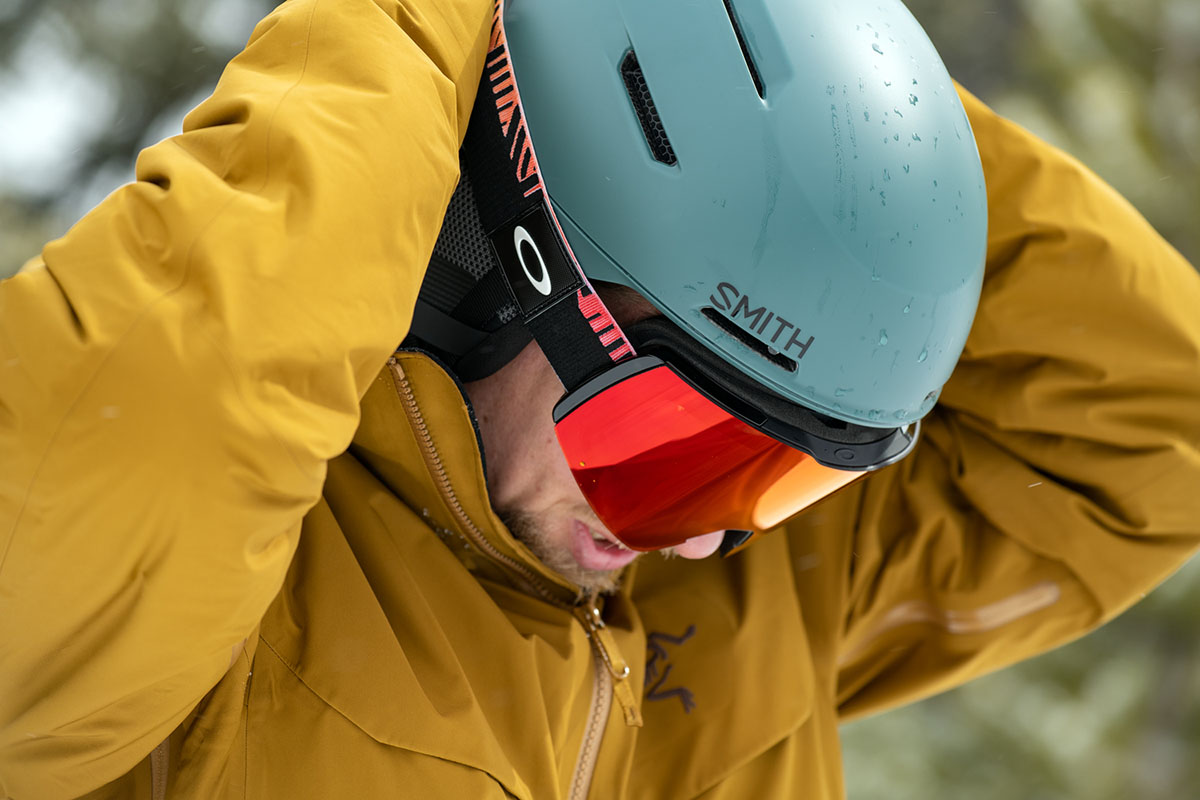
The only major comfort-related complaint I have with the Altus is its fit, which is fairly narrow around the top of the head and was rather snug (more on this in “Fit and Sizing” below). This made me feel the helmet more throughout the day compared with the Level (it didn't fade as much into the background), which has a wider and more accommodating shape. But if the fit works for you, the Altus’ comfort lines up nicely with other lids in the $200+ price range.
In giving the Altus its sleek profile, Smith kept things fairly simple with a ventilation system that includes ten total openings distributed among the top, sides, and back (the two at the very top are adjustable). For comparison, Smith’s own Level and Vantage have more openings at 20 and 21 vents respectively. To be clear, more vents aren’t always a sign of better temperature control, but they can be a useful indicator. In the case of the Altus, I would rate its ventilation as good overall and perfectly serviceable for most resort days. Combined with the mesh lining, the openings at the top do a decent job of releasing hot air.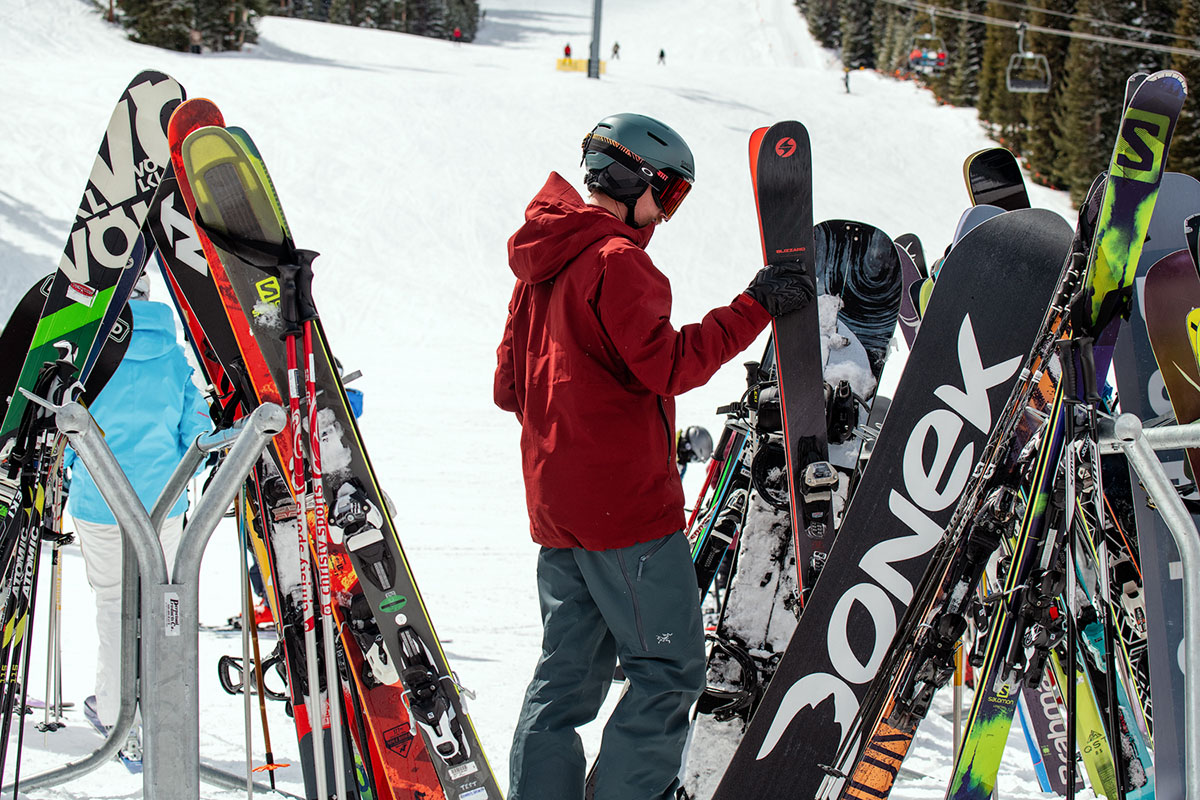
That said, while climbing my favorite sidecountry hike, I found I ran warmer and couldn’t dump heat as effectively as I could with the Level’s vents wide open. But to be fair, I didn’t have any issues on lift-assisted days, even in the spring-like temperatures we experienced in Crested Butte. And importantly, the dual cutouts along the brim of the helmet worked nicely to keep my Smith 4D Mag and Squad Mag goggles from fogging up.
Warmth is another strong suit of the Smith Altus’ design: the high-quality liner, thicker padding around the ears, and full protection around the sides and back of the head/neck add up to good all-around insulation. Most of our trip in Crested Butte was mild, with temperatures ranging from the mid 20s to 30s Fahrenheit, but my final outing of the season was a moderately cold powder day with temps in the high teens/low 20s (and even lower with wind chill). Throughout this testing, I had zero issues with warmth retention and never felt like I needed to add a beanie or layer underneath. All in all, I expect the Altus to perform similarly to the Level, which was comfortable into the low teens (and below 0 when factoring wind chill). Both lids include some fixed vents along the sides and back, but the liner effectively blocks strong gusts and minimizes the brain-freeze effect that can happen with some passive venting designs.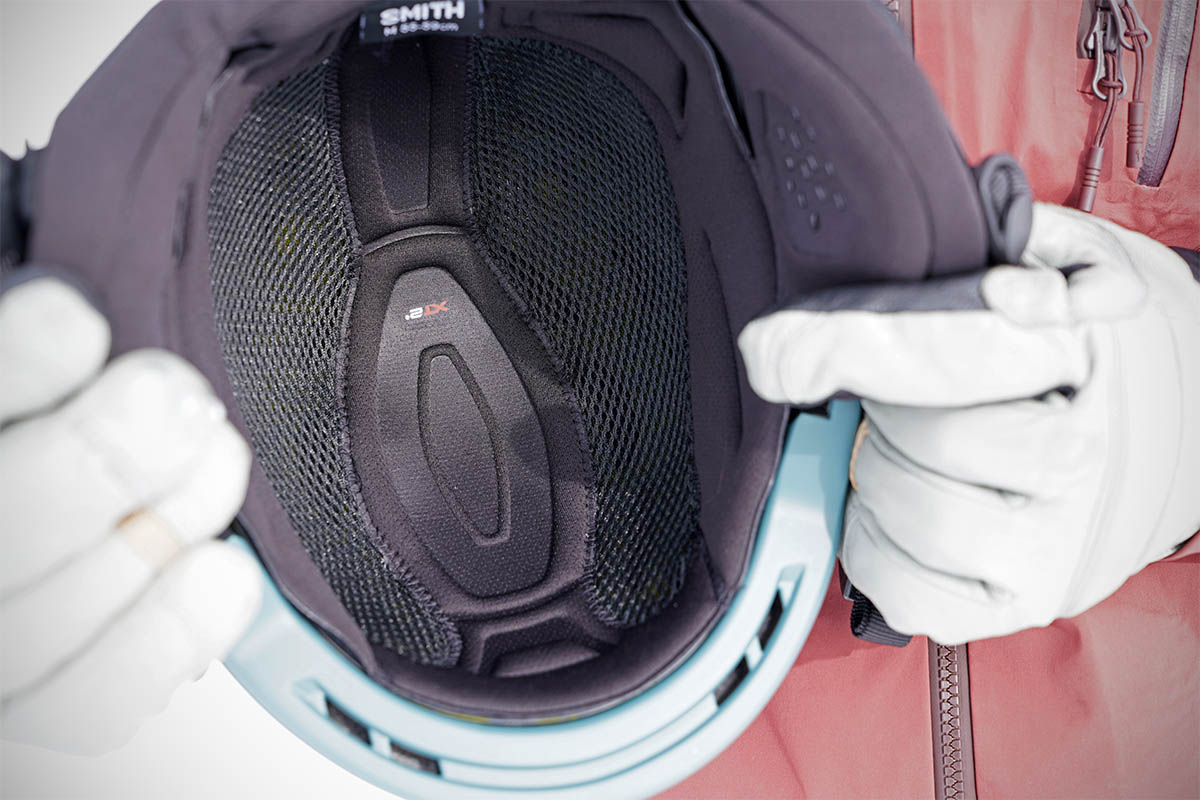
If you’ve shopped for a ski helmet in the last few years, you’ve likely noticed the MIPS abbreviation tacked on to many designs. MIPS stands for Multi-directional Impact System and is a safety technology designed to reduce potential damage to the brain in angled impacts. This is done through a liner that moves independently from a helmet’s outer shell (some companies use their own proprietary systems, like POC’s SPIN technology, but the idea is the same). It’s hard to quantify the safety benefits, but the good news is that the liner is well-integrated into the Altus’ construction. We have found that MIPS helmets tend to run slightly smaller than their non-MIPS-equipped counterparts (and the Altus already fit a bit snugly), but the difference is very minimal.
Like the Level and Vantage, the Altus also sports Smith’s distinctive Aerocore construction along the middle and sides of the helmet, which looks honeycomb-like in shape and is visible through the vent openings. The intention is for the EPS foam and tube-like Koroyd material combination to increase airflow and collapse on impact in the event of a crash. Again, it’s tough to verify Smith’s safety claims in regard to both Aerocore and MIPS, but in general, the tech is low-profile and nicely integrated into the Altus’ design.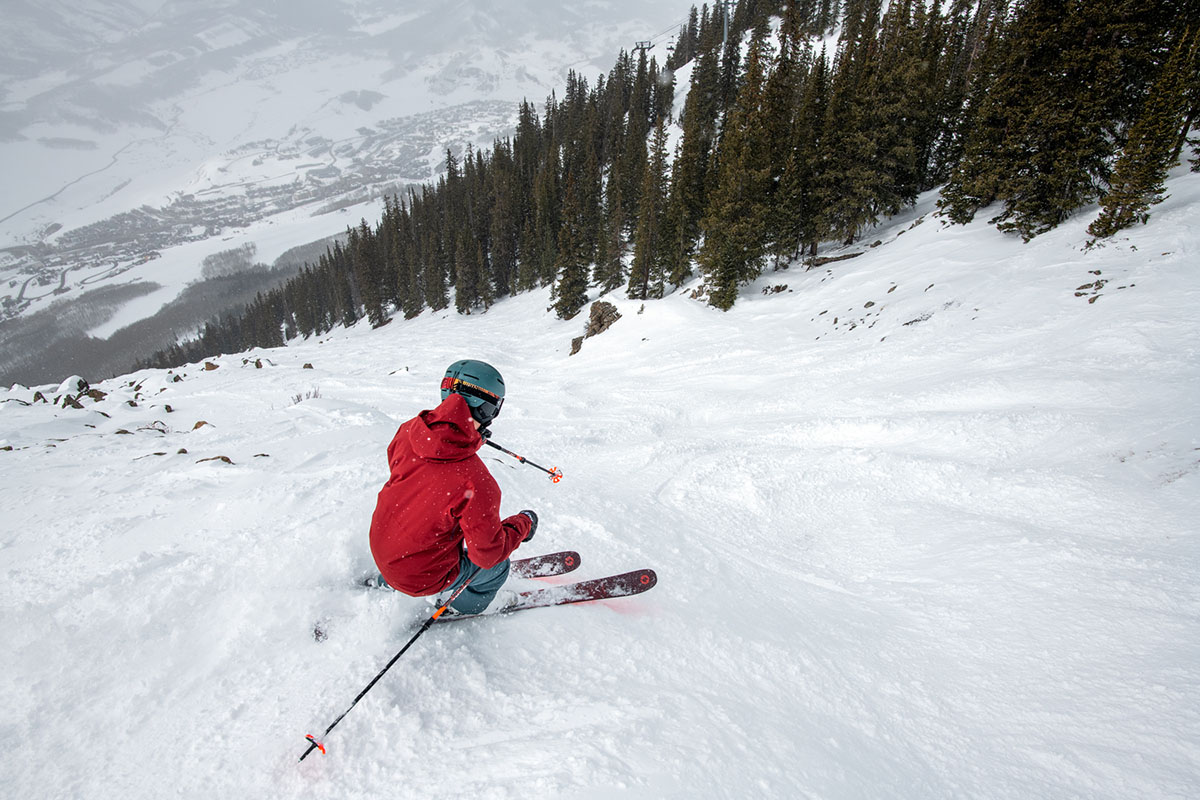
As a mid-range offering, the Altus features Smith’s in-house VaporFit adjustment system for dialing in fit. The design is quite functional: it features a large, glove-friendly dial at the back that’s easy to toggle, cinches evenly around the back and sides of the head, and is nicely cushioned so that you don’t feel the plastic tightener, which can be a problem with some lightweight models. The adjuster doesn’t continue along the front of the forehead like you get with a more premium Boa dial found on higher-end models like Smith’s own Vantage MIPS, but the difference in performance is negligible. Both adjust easily and provide a secure and solid fit, and we’ve had yet to have a VaporFit design fail, even after extensive use. And we appreciate that the entire system can be moved up/down and forward/backward between various attachment points for further customization.
COVID-19 cut our testing short this past season, so it’s a little early to make a final call on the Altus’ durability. However, early signs indicate that it isn’t particularly tough or robust. In general, in-mold designs prioritize weight over durability, especially when compared with ABS-reinforced models. Specifically, the lighter shell is more prone to cosmetic damage from being tossed around in the back of a car or dropped on the ground (or, in my case, smacking a branch off-trail). Despite limited time with the Altus, it’s already looking more dinged and scratched than my Level. Some are just light scuffs, but the paint has been stripped off in a few sections along the back and sides of the helmet (likely due to the branch hit). To be clear, it’s still perfectly functional—importantly, the EPS liner hasn’t cracked—and its protection has been as expected, but the Altus isn’t as hardwearing and likely won’t be as long-lasting as a hybrid in-mold design like the pricier and heavier Level or Vantage.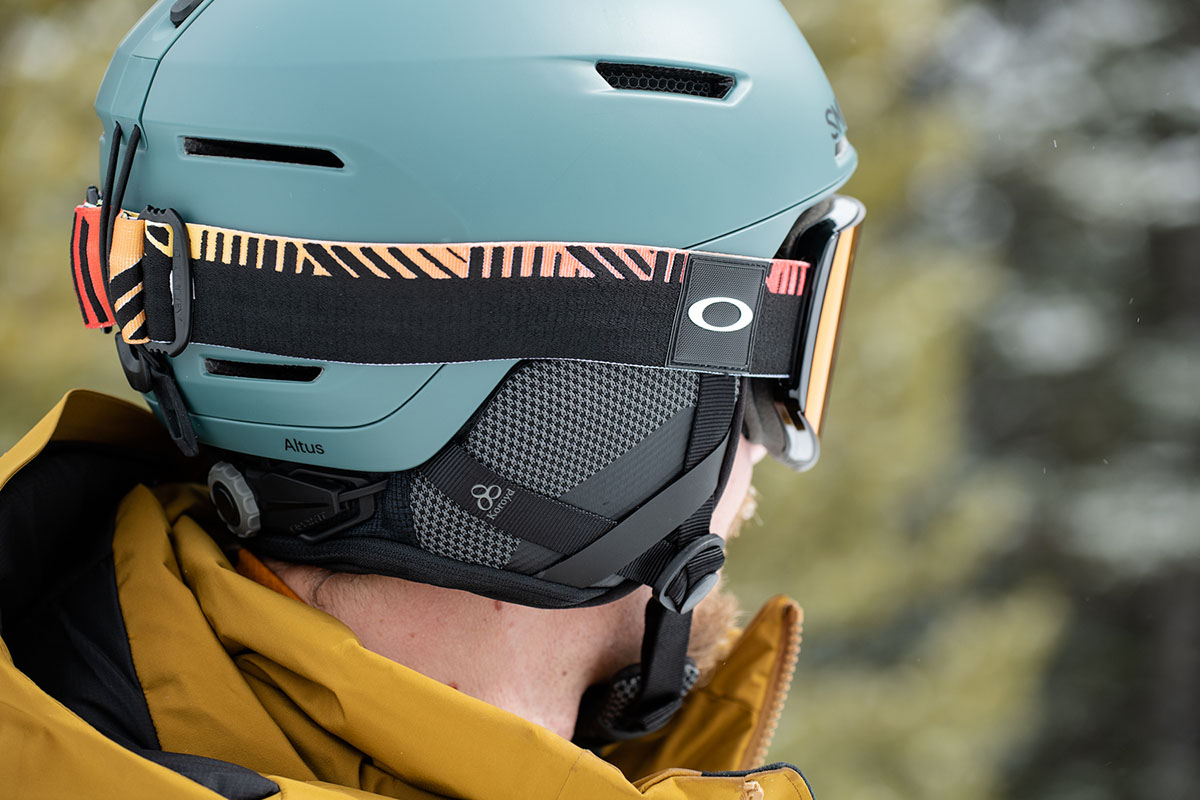
The Smith Altus MIPS clocked in at 1 pound 0.6 ounces on my scale, which is a near match to Smith’s listed weight of 1 pound even. In use, the helmet felt truly ultralight with no fatigue or restrictions in movement throughout the day, and it’s on the light end of the spectrum among similar resort lids with slip-plane technology (MIPS in this case). For reference, POC’s Obex SPIN is similar at 1 pound 0.2 ounces, although in testing, its bulkier fit made it feel a bit heavier and more cumbersome. And it easily undercuts alternatives like Smith’s own Level (1 lb. 3 oz.) and Vantage MIPS (1 lb. 2 oz.), but their hybrid in-mold constructions that include sections of ABS plastic give them the edge in durability. But overall, I was perfectly happy with the Altus’ low weight and lack of heft on the slopes.
I’ve found Smith helmets to be fairly predictable in terms of fit, so it was a surprise when the Altus felt snug when I first slipped it on. With a 57-centimeter head circumference, I land right in the middle of the medium fit range (55 to 59cm), but the Altus was noticeably tighter than others I’ve worn like the Smith Level, Holt, Vantage, and discontinued Variance. The area right at the top of the head was particularly snug, which may be a result of the helmet’s low-profile shape. I experienced similar issues with Smith’s Code, as well as many Giro helmets, and it seems my slightly rounded head shape prefers a wider and deeper interior. With time, the helmet is fitting a little better, and it’s never been enough of a problem that I’ve felt uncomfortable, but that extra tightness around the top of the head remains noticeable.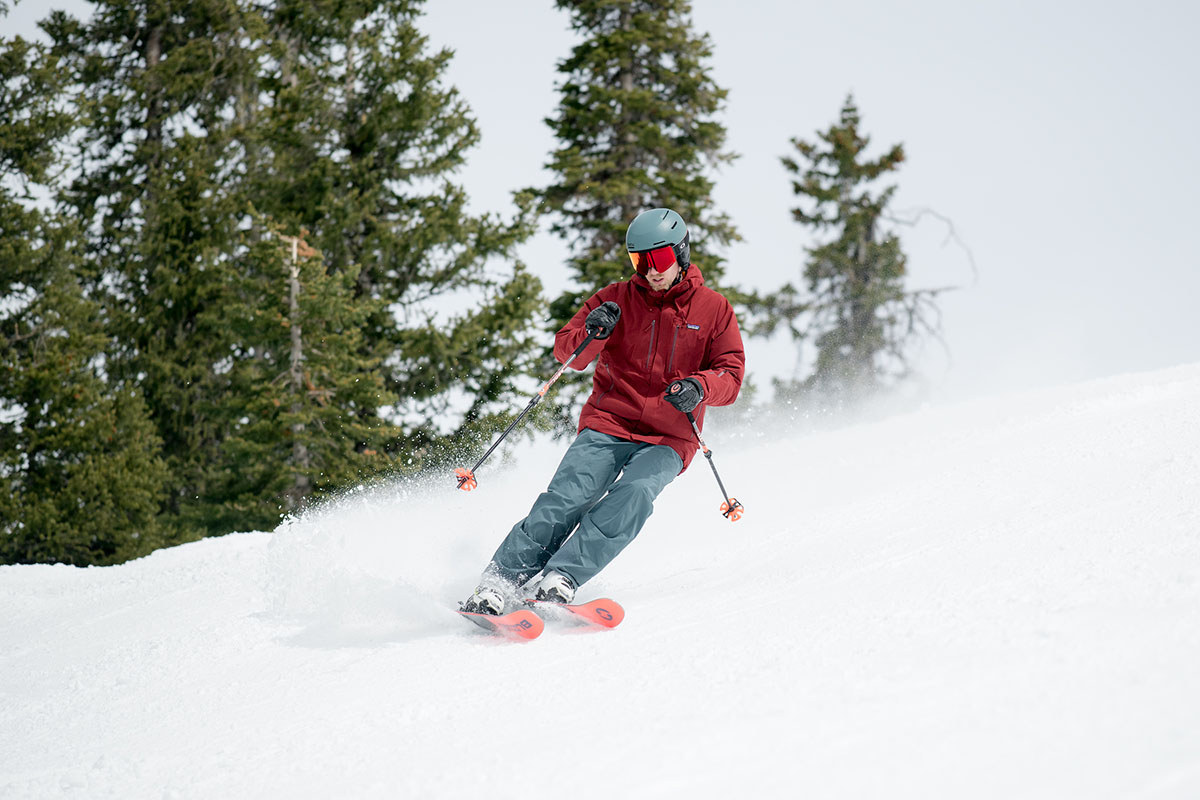
In addition to the unisex Altus we tested for this review, Smith makes a women’s-specific design called the Vida MIPS that we also brought along to Crested Butte. The biggest difference between the Altus and Vida is number of vents: the men’s version tested here sports ten, while the women’s design has 12. Colorways also vary, and the Vida is offered in fewer sizes, but otherwise the two models are nearly identical. Both boast VaporFit adjustment systems, comfortable XT2 liners, lightweight in-mold constructions, and MIPS and Aerocore safety technology. Rounding out the new collection, the Altus is also offered in a non-MIPS-equipped version for $30 less than the model we tested, with the only major difference being the lack of safety liner.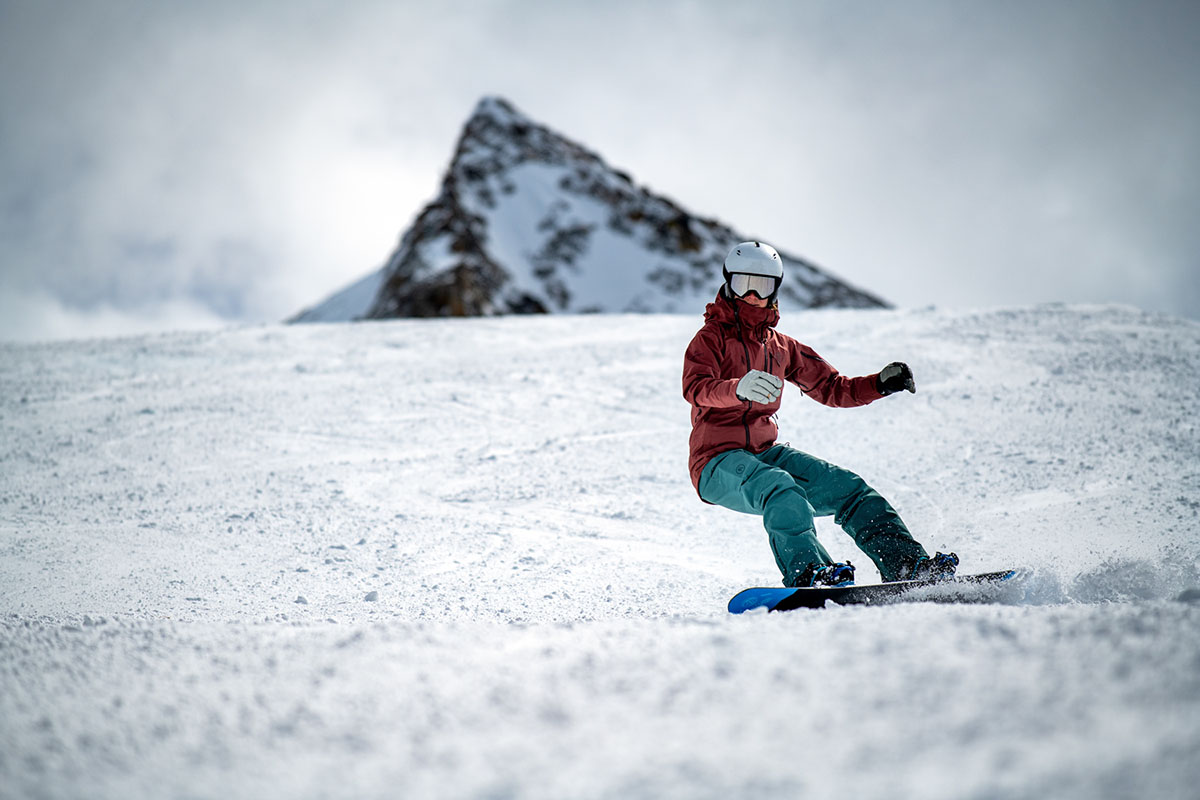
| Helmet | Price | Construction | Weight | Ventilation | MIPS |
|---|---|---|---|---|---|
| Smith Altus MIPS | $180 | In-mold | 1 lb. | Adjustable (10 vents) | Yes |
| Giro Jackson MIPS | $180 | In-mold | Unavailable | Fixed | Yes |
| POC Obex SPIN | $200 | In-mold w/ ABS | 1 lb. 0.2 oz. | Adjustable (11 vents) | Yes (SPIN) |
| Oakley MOD3 MIPS | $200 | In-mold | Unavailable | Adjustable | Yes |
| Smith Code MIPS | $200 | In-mold | 1 lb. 0 oz. | Fixed (6 vents) | Yes |
| Smith Level MIPS | $210 | Hybrid in-mold | 1 lb. 3 oz. | Adjustable (20 vents) | Yes |
Smith’s new-for-2021 Altus slots in as the brand’s midrange snow helmet that combines premium features and a lightweight, streamlined build. Giro and Smith often go head-to-head in snow helmets and goggles, and their Altus equivalent is the Jackson MIPS. The two lids share a lot in common: lightweight in-mold constructions, sleek and low-profile shapes (that seem to favor narrower and more oval-shaped heads), and basic features like a goggle retainer at the back. The Jackson’s venting system isn’t adjustable like the Altus, but it’s still well-tuned for keeping you comfortable in a range of temperatures. And we do prefer the softer interior on the Altus, its Aerocore construction adds an additional level of safety, and its rear dial is easier to adjust with gloves. All in all, both are high-quality, lightweight designs, but we give the slight edge to the Altus.
Another one of our favorite all-around lids is POC’s Obex SPIN. Like the Altus, the POC features helpful safety measures including their in-house SPIN slip-plane system (comparable to MIPS), offers similar ventilation, and is lightweight at 1 pound 0.2 ounces. In parsing out the differences, the Obex is tougher with an ABS shell, although we found the plastic-heavy construction made the Obex feel noticeably heavier and bulkier on our head. And we also give the slight nod in comfort to the plusher Smith. In the end, a final decision between the two will likely come down to feel versus protection, and we prefer the tougher yet similarly light Obex.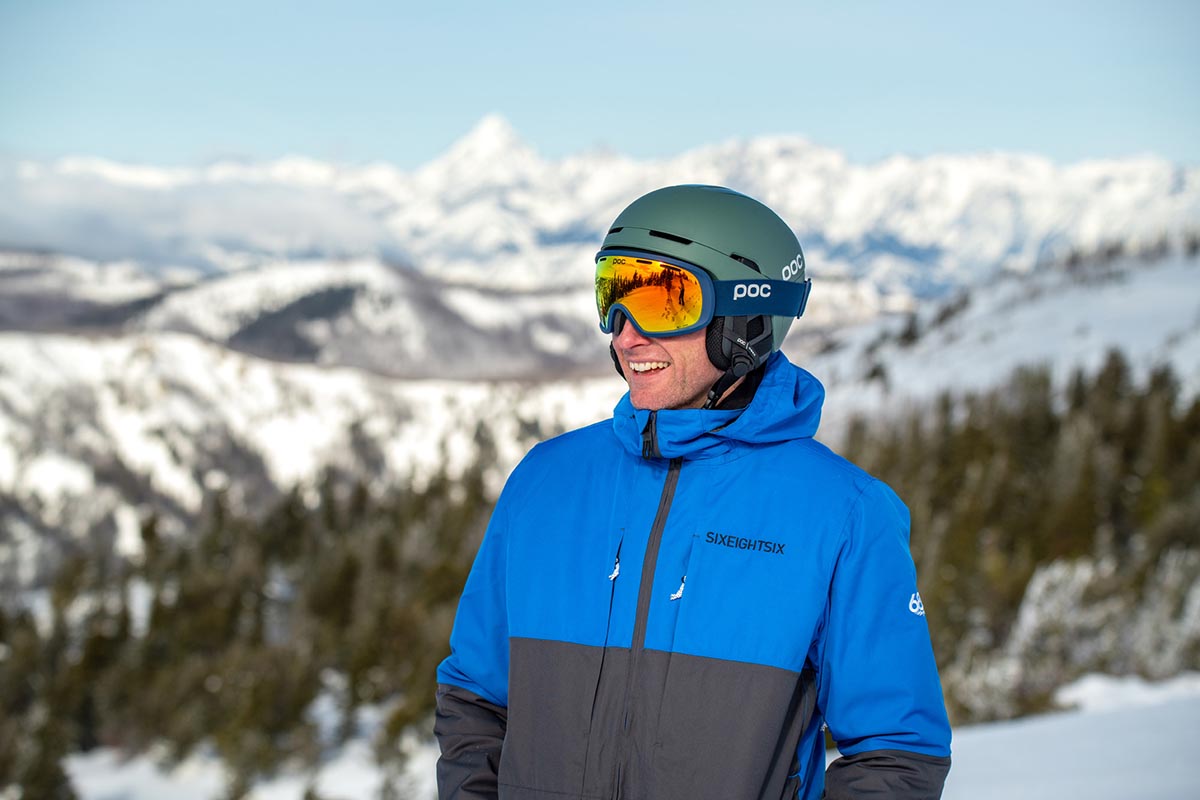
Oakley’s MOD collection is another standout in the snow helmet market, and their MOD3 is an enticing alternative to the Altus. For another $20, you get an upgraded Boa adjuster and magnetic chinstrap, and the Modular Brim System gives you the option to customize the look. Both lids use in-mold builds that keep weight low, but we prefer the softer padding on the Smith over the Oakley. Otherwise, the two perform fairly similarly. Considering the upgraded features on the MOD3, we think it justifies its higher price tag, but both are solid options.
Slotting immediately above the Altus in Smith’s lineup is the Code MIPS. Right off the bat, there’s a lot in common: low-profile shapes, lightweight in-mold builds (both clock in at 1 lb.), Aerocore constructions with Koroyd panels, and a smaller-than-expected fit (we experienced the same tightness near the top of the head with both helmets). However, the Altus is a bit more ventilated (the Code features six vents) and gives you the option to adjust the top openings, while the Code’s are fixed. In addition, the Altus’ liner is a bit more cushioned, although both are comfy. And importantly, you do get a Boa dial, even smoother shape, and magnetic chinstrap with the Code. Like the Oakley, if those features are worth it to you and the styling is up your alley, it could be worth the extra $20.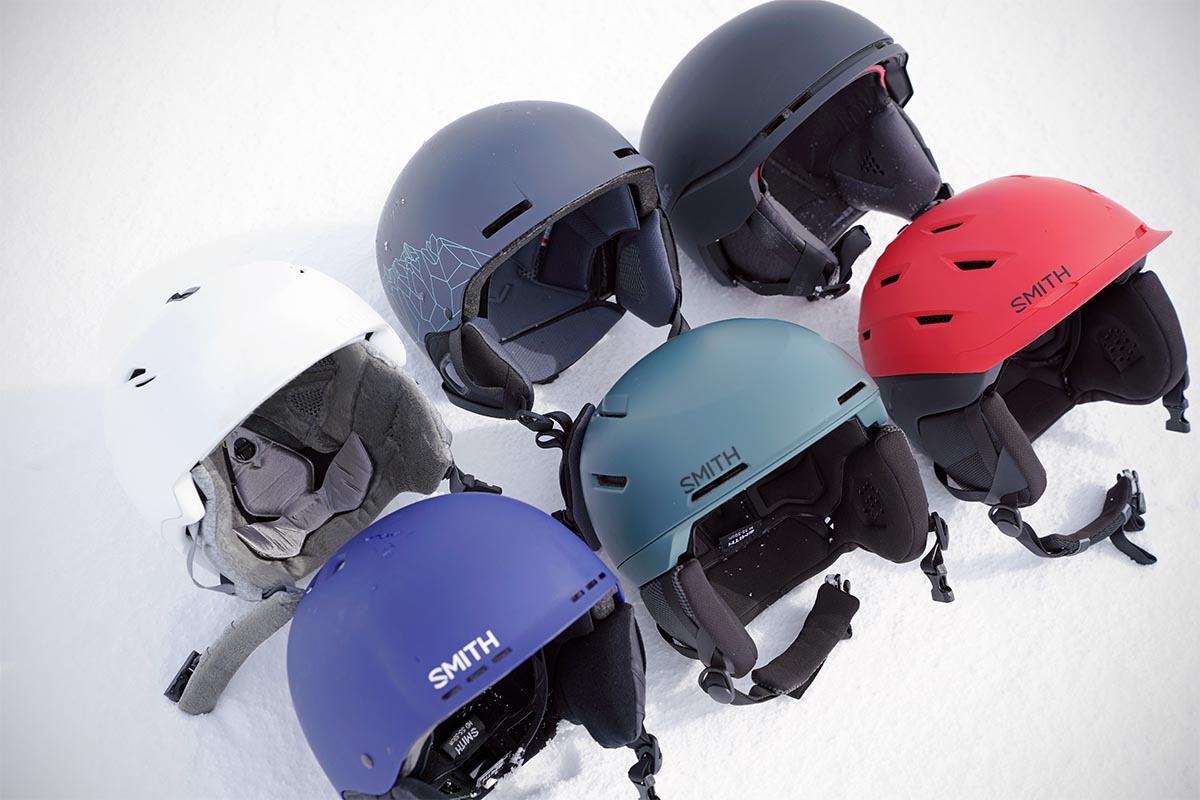
A final option to consider is Smith’s own Level MIPS, which is currently our favorite all-around resort lid: it’s extremely comfortable, has a fit that works with a wide range of head shapes, and offers a solid combination of warmth and ventilation. Styling is a matter of personal preference: the Altus is lower-profile and a little sleeker, while the Level is a bit techier like the popular Vantage. But importantly, both provide all-day comfort and share features like the standard buckle chin strap and VaporFit adjustment system. All in all, the differences are minor, but the Level strikes us as a bit more well-rounded.